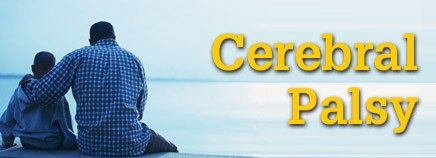
Cerebral palsy (CP) is a disorder that affects muscle tone, movement, and motor skills (the ability to move in a coordinated and purposeful way).
CP usually is caused by brain damage that happens before or during a baby’s birth, or during the first 3 to 5 years of a child’s life. This brain damage also can lead to other health issues, including vision, hearing, and speech problems; and learning disabilities.
There is no cure for CP, but treatment, therapy, special equipment, and, in some cases, surgery can help kids who are living with the condition.
About Cerebral Palsy
Cerebral palsy is one of the most common congenital (existing at or before birth) disorders of childhood. About 500,000 children in the United States have the condition.
The three types of CP are:
- spastic cerebral palsy — causes stiffness and movement difficulties
- athetoid cerebral palsy — leads to involuntary and uncontrolled movements
- ataxic cerebral palsy — causes a problem with balance and depth perception
Since cerebral palsy affects muscle control and coordination, even simple movements — like standing still — are difficult. Other functions that also involve motor skills and muscles — such as breathing, bladder and bowel control, eating, and talking — also may be affected when a child has CP.
Cerebral palsy does not get worse over time.
Causes of Cerebral Palsy
The exact causes of CP aren’t always known. But many cases are the result of problems during pregnancy when a fetus’ brain is either damaged or doesn’t develop normally. This can be due to infections, maternal health problems, a genetic disorder, or something else that interferes with normal brain development. Rarely, problems during labor and delivery can cause CP.
Premature babies — particularly those who weigh less than 3.3 pounds (1,510 grams) — have a higher chance of having CP than babies that are carried to term. So do other low-birthweight babies and multiple births, such as twins and triplets.
Brain damage in infancy or early childhood also can lead to CP. For example, a baby or toddler might suffer damage because of lead poisoning, bacterial meningitis, poor blood flow to the brain, being shaken as an infant (shaken baby syndrome), or being in a car accident.
Diagnosing Cerebral Palsy
CP may be diagnosed very early in an infant known to be at risk for developing the condition because of premature birth or other health problems. Doctors, including developmental pediatricians and neurological specialists, usually watch kids closely after birth so that they can identify and address any developmental delays or problems with muscle function that might suggest CP.
In a baby carried to term with no other obvious risk factors for CP, it may be difficult to diagnose the disorder in the first year of life. Often doctors aren’t able to diagnose CP until they see a delay in normal developmental milestones (such as not reaching for toys by 4 months or not sitting up by 7 months), which can be a sign of CP.
Muscle tone that is too tight or too loose, poorly coordinated movements, and the presence of infant reflexes beyond the age at which they are expected to disappear also can be signs.
How Cerebral Palsy Affects Development
Kids with CP have varying degrees of physical disability. Some have only mild impairment, while others are severely affected. This depends on the extent of the damage to the brain. For example, brain damage can be very limited, affecting only the part of the brain that controls walking, or it can be much more extensive, affecting muscle control of the entire body.
The brain damage that causes CP also can affect other brain functions and lead to additional medical issues, such as:
- visual impairment or blindness
- hearing loss
- food aspiration (the sucking of food or fluid into the lungs)
- gastroesophageal reflux (spitting up)
- speech problems
- drooling
- tooth decay
- sleep disorders
- osteoporosis (weak, brittle bones)
- behavior problems
Seizures, speech and communication problems, and intellectual disabilities are more common among kids with CP. Many have problems that can require ongoing therapy and devices such as braces or wheelchairs.
Treatment of Cerebral Palsy
Currently, there’s no cure for cerebral palsy. But a variety of resources and therapies can provide help and improve the quality of life for kids with CP.
Different kinds of therapy can help them achieve their maximum potential in growth and development. As soon as CP is diagnosed, a child can begin therapy for movement, and other areas that need help, such as learning, speech, hearing, and social and emotional development.
In addition, medicine, surgery, or braces can help improve muscle function. Orthopedic surgery can help repair dislocated hips and scoliosis (curvature of the spine), which are common problems associated with CP. For severe muscle pain or stiffness, kids can take medication by mouth or given through a pump (the baclofen pump) implanted under the skin.
Kids can improve their bone health by eating diets high in calcium, vitamin D, and phosphorus. These nutrients help keep bones strong. Doctors, nutritionists, and even speech-language therapists can work with families to make sure kids are getting enough of the right nutrients and suggest changes to their diets or mealtime routines, if needed.
A variety of medical specialists might be needed to treat different medical conditions. Even if several medical specialists are needed, it’s still important to have a primary care doctor or a CP specialist. This doctor will take care of your child’s routine health care and also help you coordinate your child’s care.
A team of professionals will work with you to meet your child’s needs. That team may include therapists, psychologists, educators, nurses, and social workers.
Many resources are available to help and support you in caring for your child. Talk to your doctor about finding those in your area.

